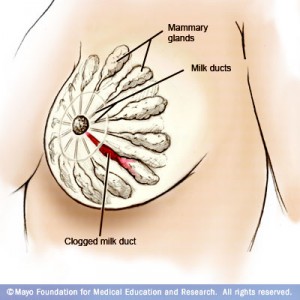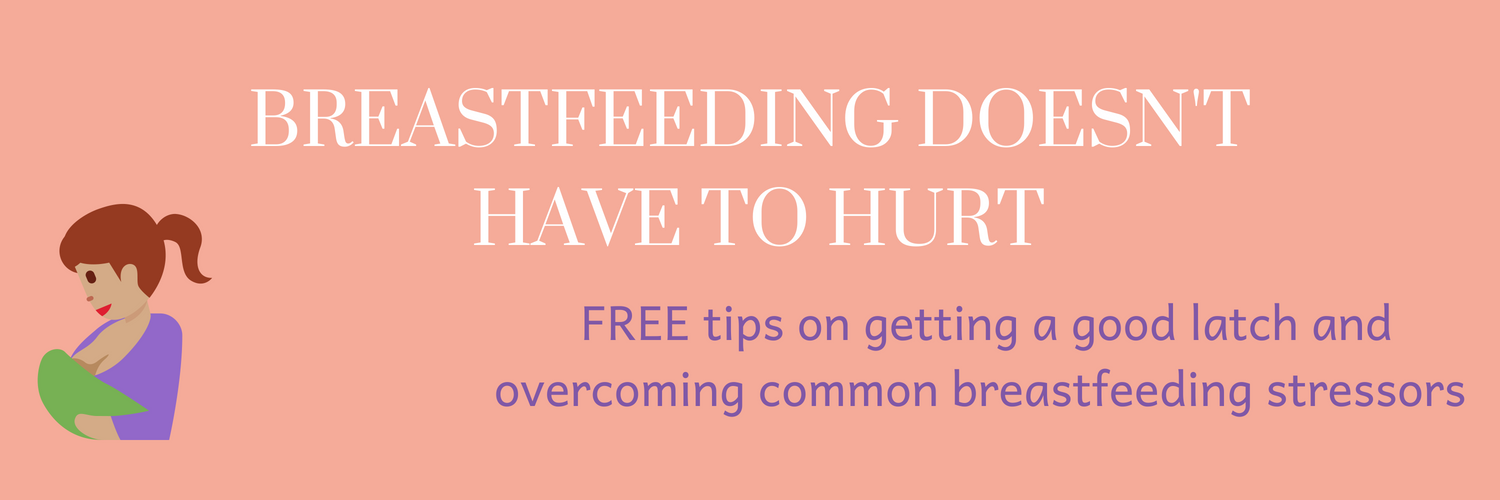Holy OUCH Batman!

My boob is on fire and it feels like I’ve been nursing a baby alligator instead of my baby.
If you’ve ever felt like this, you’re certainly not alone. It’s not enjoyable, but it’s most definitely curable once you determine the cause of your pain.
Why does the CAUSE matter? Just make it STOP
Girl, I understand. I just want the pain to stop too and I’ll do almost anything to make it happen when I’m hurting. But, it’s very important to know the difference between a plugged duct and mastitis. While treatment is similar for both, mastitis (if not treated quickly) may require antibiotics and additional medical support to heal.
If you are unsure if it is a plugged duct or mastitis, please contact a trained lactation consultant or your medical provider for immediate assistance. In many cases, your OB/Gyn will treat you postpartum for breastfeeding related concerns.

Blocked Duct or Mastitis?
Blocked or Clogged Duct
It’s not always easy to differentiate between the two as several of the symptoms overlap.
A blocked duct (also known as a plugged duct or clogged duct) is noted as hard, painful swelling that may include a significant part of the breast, according to breastfeeding expert Dr. Jack Newman. It usually comes on slowly and affects only one breast or part of one breast.
What Caused It?
It may be impossible to pinpoint EXACTLY what caused your pain, but here are some common causes:
- Engorgement/Inadequate emptying of the breast
- Poor latch
- Pressure from a tight bra, sleeping on stomach/pressure on breasts, etc.
- Inflammation from injury, illness, etc.
- Stress
- Fatigue
Treatment Options
Treatment for a clogged milk duct typically consists of a few simple steps – Heat, Massage, Empty Breast, Repeat.
HEAT
- Before nursing or pumping, apply a warm, wet compress to the affected area for 15-20 minutes.
- A wet cloth will do or try heating some water then pour into a disposable diaper.
- This method helps the compress stay warmer longer than using just a regular cloth.
- A wet cloth will do or try heating some water then pour into a disposable diaper.
- Take a hot shower and let the water run over your breasts.
- Fill a sink or bowl with warm water and submerge your breast in the water.
- Epsom salt can be added for better results. Use one cup for every 2 quarts of water.
MASSAGE
- It is best to massage the affected area in combination with heat. So while you are using a warm compress, are in the shower or using the sink method, gently but firmly use your thumb or forefingers to rub the plugged duct toward your nipple. This will loosen the clog and begin moving the milk out of the affected duct.
EMPTY BREAST
- Nurse frequently & empty the breasts thoroughly. Aim for nursing at least every 2 hrs. Keep the affected breast as empty as possible, but don’t neglect the other breast.
- When unable to breastfeed due to pain or other reasons, you should express milk frequently and thoroughly (with a breast pump or by hand).
- Have baby nurse from the affected breast first when nursing. If it is too painful to start with that breast then start on the other side but switch to the affected one after your milk lets down.
- Make sure baby has a good latch and is in a position that allows you to massage the clogged duct.
- You can apply a warm compress while nursing or pumping.
- Continue to massage the clogged duct gently but firmly toward the nipple as you nurse or pump.
- Try nursing while dangling or leaning over your baby to get gravity to help pull the clog out. You can do this by laying baby on the floor and kneeling over on all fours and allowing baby to nurse. You want baby’s chin to assist with massaging the clog from the duct.
REST
- Between nursing sessions, you may find that taking an anti-inflammatory medication such as ibuprofen can help with the pain and swelling. You can also use cold compresses between feedings.
- Continue to pump or hand express after nursing to aid milk drainage.
REPEAT
You want to ensure you are nursing and/or pumping every 2-3 hours to clear the clogged duct.
A blocked duct will generally improve within 24-48 hours with or without intensive treatment. If the above treatments don’t work, you can consult with your healthcare provider for additional treatment options.
Mastitis
Mastitis is a bacterial infection in part or sometimes the entire breast. It is can be caused by an obstruction of milk flow due to:
- changes in nursing habits
- going back to work, nursing less frequently, weaning, etc.
- infection from a cracked and/or bleeding nipple
- history of mastitis
- recent hospital stay or exposure to infection
- or any of the symptoms listed above for clogged ducts
Many symptoms of mastitis are the same as blocked ducts. In addition to a lumpy knot in the breast, it is also generally tender with redness and hot to the touch.
Many women experience flu-like symptoms including aches, chills and a low-grade fever.
If the symptoms are mild and present for less than 24 hours, many healthcare providers will not suggest an antibiotic. They will refer you to the treatments listed above for a clogged duct and/or call in the prescription and ask you to wait to see if symptoms improve.
However, if symptoms are NOT improving after 24 hours or if you are acutely ill, many will call in a prescription without seeing you in the office. Check with your healthcare provider directly.
If you are nursing a baby two weeks old or younger, immediately contact your provider. Mastitis is common in the early days of breastfeeding while a baby is learning how to properly latch. It’s always a great idea to consult with an IBCLC in your area to have her help you and your nursling develop a great breastfeeding relationship. Don’t know where to find a lactation consultant? Here’s one website to start your search: Find an IBCLC
But it KEEPS COMING BACK!!
Ouch again mama! Recurring clogged ducts are not fun. If you seem to keep getting a clogged duct or mastitis in the same breast or the same area, you may need to look closer at the root cause of the infection and also that the infection had truly worked its way out of your body.
According to KellyMom, a major risk factor for recurring mastitis is “failure to completely recover from a previous bout of mastitis due to slow treatment, incorrect treatment (wrong antibiotic, for example), or treatment that was not long enough.”
You can add in supplements such as Vitamin C and lecithin. The lecithin is thought to reduce the viscosity (stickiness) of the milk and helps the infection clear out more easily.
Visual Guide to Assess & Treat Sore Breasts
While blog articles are great, I know that as a mom you’re often looking for a quick answer (especially when you’re up at 2:47 in the morning).
Download this visual guide to determine if you’re feeling the symptoms of are a clogged duct or if it’s mastitis. It’s a great visual to save to your phone so you can quickly grab it instead of turning to Dr. Google.



